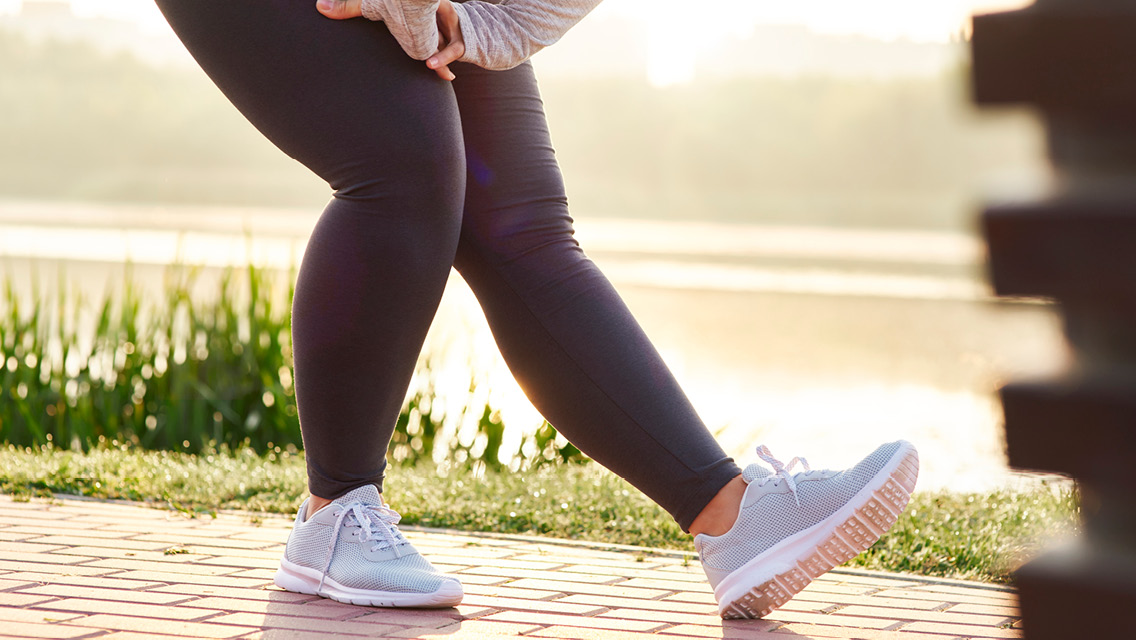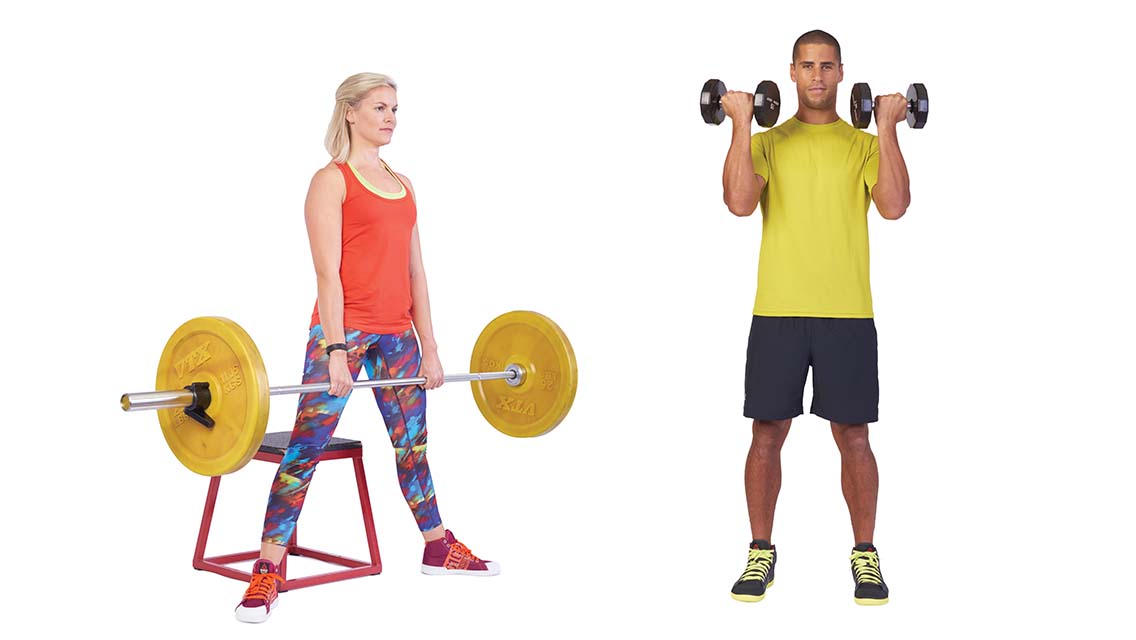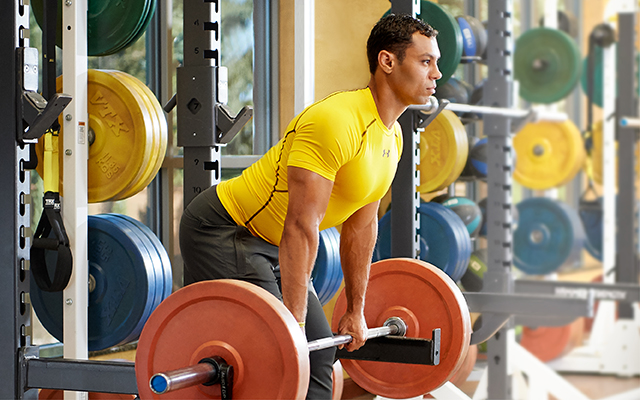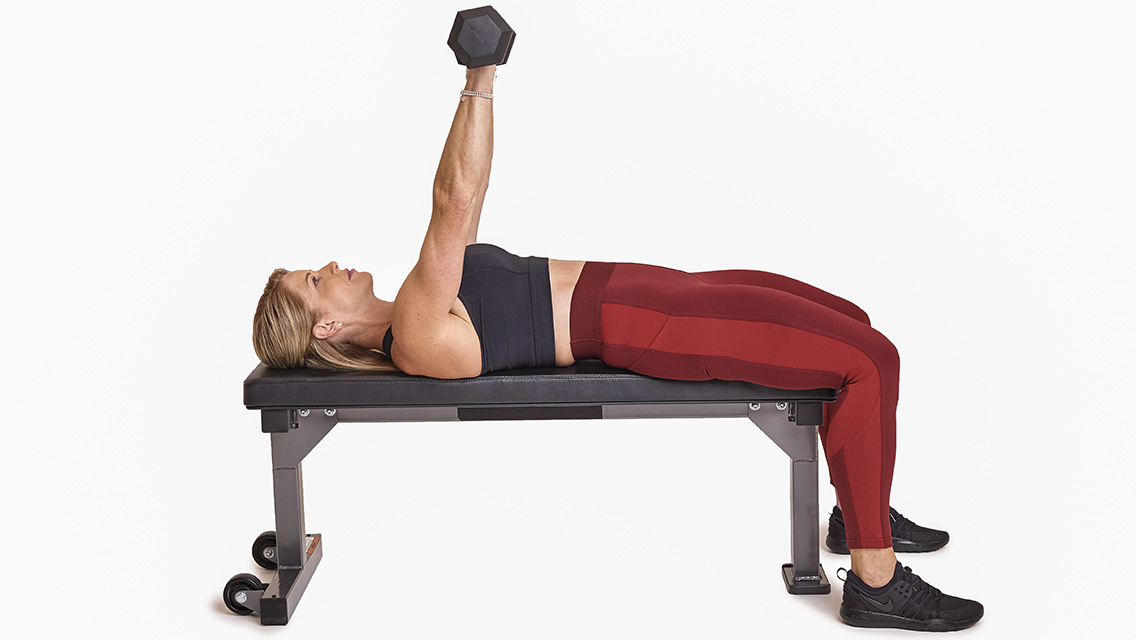If you’re overweight, the get-in-shape advice you hear can be daunting: More often than not, it seems you’re either being pitched information designed for people who are already in pretty good shape, or you’re being overwhelmed with suggestions that feel unrealistic, contradictory and misleading.
A lot of the pitches invite you to “drop pounds fast,” but they ignore the exercise limitations you may be facing as the result of the extra pounds you’re currently carrying. The result? You either dive into the wrong type of workout (and risk injury) or you just get frustrated and give up altogether.
A better approach: Adjust your focus away from weight loss and toward improving your fitness level. The desire to lose weight may be good motivation to get to the gym, but by turning your attention away from just your weight and toward overall fitness, you can build a strategy with much better and more numerous payoffs.
When you pursue a program designed to make you more fit, a lot of weight-loss objectives tend to take care of themselves.
“Unlike fat-loss programs, your fitness program will bring you amazing benefits in terms of your energy, self-confidence, and most important, your dreams of living a healthy, happy life,” writes Sally Edwards in Fit and Fat: The 8-Week Heart Zones Program, which she coauthored with Lorraine Brown. The bonus: When you pursue a program designed to make you more fit, a lot of weight-loss objectives tend to take care of themselves.
Making Adjustments
A common mistake many overweight people make is that they approach fitness like it’s one-size-fits-all. If you’re significantly overweight, it’s important to realize that you may not be able to do the same exercises — or sustain the same types of exertion and impact — as someone who is slender. That doesn’t mean you shouldn’t exercise. It just means you may need to make some adjustments.
The first thing to note: If you’re carrying extra weight, even if you are reasonably fit, you’re probably going to feel it in your workouts. Imagine jogging while carrying a pair of 5-pound dumbbells. You think that extra load isn’t going to affect you? Think again.
“Even if you’re not completely out of shape, in order to maximize the benefit of exercise and avoid injury, you have to consider every pound beyond what your body was meant to carry,” says Carl Erickson, MD, who owns Cascade Family Practice in Portland, Ore. This becomes especially important for those carrying more than 15 pounds of excess weight, because any load above your body’s ideal weight adds stress to your joints.
Muscles adapt and grow strong to bear extra weight, but your joints were designed to carry a body mass proportionate to your height. They don’t adjust to excess loads by becoming stronger; instead, they wear out, which is why heavier people often develop arthritis early in life, explains Erickson.
By altering your workouts to accommodate your size, you can design appropriate cardiovascular, strength and flexibility routines that you can maintain over time without straining your joints. This way you can avoid injury and frustration while making your workouts more enjoyable, beneficial and, above all, sustainable.
Give Yourself a Lift
When Erickson works with overweight clients, he usually first recommends a strength-training routine. “Of all the exercises available, weight training increases function most dramatically,” he says. Yet, he notes, until they’ve toned up, overweight individuals should avoid lifts that overload the spine, hips and knees, such as heavy squats, dead lifts and overhead presses.
Initially, you can obtain similar conditioning benefits by using machines instead (for instance, the leg press), which eliminates body weight from the equation. You can also use your extra weight to your advantage by performing body-weight squats against a wall. Position a fitness ball between your back and the wall to provide balance and to compensate for the tendency to lean forward over your knees.
Overweight individuals should avoid lifts that overload the spine, hips and knees, such as heavy squats, dead lifts and overhead presses.
Many times, overweight people develop strong lowerbody musculature without commensurate upper-body strength. To begin building a balance, you can choose lighter weights for upper-body exercises and follow a high-rep, low-weight routine that builds a strength and endurance baseline.
In body-weight exercises, such as squats, pushups and other calisthenics, you don’t have the option of using lighter weight, so follow the strength-training routine of heavy lifters, who perform only three to five repetitions per set. In other words, instead of performing six medicine-ball squats for three exhausting sets, try doing three squats for six sets. You’ll find this easier and more beneficial because you will be able to complete each set in better form.
Weighted exercises require excellent technique to provide their full benefits and to avoid injury. If you don’t have a trainer and have just begun to exercise, you may want to begin with a preconditioning program using lighter weights and 15 repetitions per exercise. Machines are generally safest because they were designed for use without a spotter and the mechanism forces you to perform the exercise in proper form. By completing a full machine circuit, including upper, lower and trunk exercises, you’re guaranteed a decent conditioning workout that prepares you for more advanced weight training.
Core Focus
Weak abdominal muscles are another problem common among those carrying extra weight. When Jessica Madsen, an American College of Sports Medicine health and fitness instructor in Lincoln, Neb., begins training a heavy client, she focuses the first few months on strengthening core muscles with exercises, such as trunk rotations and medicine-ball tosses.
“Even a small belly throws off your balance. To compensate for the extra weight up front, you tend to lean backwards.”
“Core training provides excellent functional strengthening for anyone, but especially for those carrying a belly,” explains Madsen. The core muscles include all of those in the lower trunk, and a toned core represents a prerequisite to more advanced strength training. “People with a belly tend to develop lordosis — excessive inward curving of the lower back,” says Madsen. “Even a small belly throws off your balance. To compensate for the extra weight up front, you tend to lean backwards.”
To avoid further aggravating this condition, Madsen has clients with weaker abs put their feet on a box to lift the knees during exercises like the bench press in order to reduce their spinal curvature. You can also stand with your back against a wall, tilting your pelvis to press your lumbar vertebrae back into the wall, as you perform dumbbell exercises like curls or front and lateral raises.
Reducing Impact
Since many overweight people begin an exercise program to lose weight, and since aerobic exercise is considered the fastest way to do that, heavier individuals often disregard their weight and push too hard for quick results. Injuries to overtaxed knees, ankles and hips are guaranteed to undermine your progress. To keep working out over time, it’s best to temper high-impact cardiovascular exercise, like running, with low-impact aerobics on machines or in the water. Also give yourself adequate time to recover between sessions.
When Rob Caringi of Troy, Mich., began his training, he weighed 457 pounds and couldn’t walk three miles, let alone run a block. Two years later, he completed his first 5K run. He accomplished what seemed an unreachable goal by combining high-intensity, low-impact aerobic exercise, including water aerobics, with low-intensity weight-bearing exercise, such as walking, and eventually jogging, on the treadmill. This prescription allowed him to condition his heart and build endurance while sparing his knees.
Caringi’s personal trainer developed a program that began with water work. “I’d swim about half a lap and then walk the rest,” explains Caringi. As his endurance increased, so did the intensity. Soon he adopted a three-day rotation that included swimming, elliptical training and treadmill workouts. The swimming and elliptical training allowed him to work on his cardiovascular endurance without concern for his joints. Walking and jogging provided the weight-bearing, high-impact work that he needed to condition his bones and develop functional strength.
A beginner’s combination workout might follow Caringi’s routine: pool walking or water aerobics with a low-impact cardio exercise, such as cycling or elliptical training, and walking or light jogging on a treadmill. The advantage of a treadmill is that you can vary the terrain at will by adjusting the incline, and you can easily stop whenever you feel pain or discomfort.
Stretch Your Limits
Although flexibility training is one of the most essential aspects of a well-rounded exercise program, extra weight and size can throw off your balance and make it harder to complete a full reach over body parts. “Perhaps the most important aspect of yoga for overweight people lies in an opportunity to reconnect head and body.” “For most heavy people, some stretching can be very uncomfortable, especially when it stresses the knees and ankles,” explains Mara Nesbitt, a yoga instructor who specializes in yoga for the overweight. “It’s hard to sit on the floor and touch your toes when your belly gets in the way. But it’s just a question of working around the obstacles.”
“Perhaps the most important aspect of yoga for overweight people lies in an opportunity to reconnect head and body.”
In her classes and videos, Nesbitt often modifies regular yoga poses and common stretches for her students. For instance, she takes standing postures to the floor, such as the quadriceps stretch performed by runners. While lying on your right side, clasp your left ankle with your left hand and gently pull your heel back toward your buttock. This way you can achieve the stretch without stressing your joints or risking falling. If you have difficulty getting down and then back up off the floor, Nesbitt recommends stretching on a flat and resilient surface — like a plastic office mat — on your bed.
You can also use a sturdy chair as a portable balance aid to brace yourself when trying stretches that require equilibrium. For example, by laying your hands flat on the seat, you can stabilize yourself in a standing forward bend. Placing a foot on the seat while grasping the backrest can help you perform a lunge while sparing your knees. Try resting your heel on the seat and with a straight leg bend forward to stretch your hamstrings. You can even sit on the chair and use the backrest to help deepen a spinal twist.
Most of all, Nesbitt stresses that yoga and general stretching remain safe as long as you listen to your body. “Don’t ignore the signals of discomfort,” she advises. “Perhaps the most important aspect of yoga for overweight people lies in an opportunity to reconnect head and body.”
Most health and fitness experts echo this view. Each body has different needs and limitations, they note, so there’s no exercise prescription that suits everyone. It’s what you can keep doing over time that will yield the greatest benefit. By adjusting your exercise to weight and size, you can avoid injury and enjoy the enduring pleasure of working out for a lifetime.
Fit and Fat
At more than 450 pounds, Rob Caringi (see main story) faced many challenges when he first entered the gym — both physical and psychological. Here’s his advice on overcoming some of the common obstacles and insecurities that confront many overweight people when they first begin to work out:
- Fitting In: You may feel like you’re the biggest person in the gym, but the truth is that most people don’t care what you look like. Go to the gym in the morning or around lunchtime when people have limited time and are more focused on getting a serious workout than they are on the other people working out around them. Plus, by visiting the gym at the same time every day, you get used to being around the same group of faces.
- Grab a Partner: Get a gym partner or trainer so that you are accountable to someone and so that you don’t have to go it alone. But make sure he or she is there to help you — you don’t want a distraction or another barrier to overcome.
- Ask for Help: Consult a professional to make sure you are correctly using the machines. If not, you can end up causing more harm than good or fail to get the full benefit of the exercise. If you are going to make the effort to go to the gym, you might as well do it right and make it count.
- Man Against Machine: You may find you are too big for some of the machines. Always ask a trainer for advice on working around equipment limitations (seats, handles, etc.) and also about the weight limits of the cardio machines you intend to use.
- Easy Does It: Don’t take on too much at once. If you overdo it, you can hurt yourself or be in so much pain that you won’t make it back.
- Have Fun: Everyone who works out on a regular basis has an embarrassing gym story. Sometimes you have to be able to laugh at yourself.
This article originally appeared as “Heavyweight Fitness” in the May 2004 issue of Experience Life.




This Post Has 0 Comments